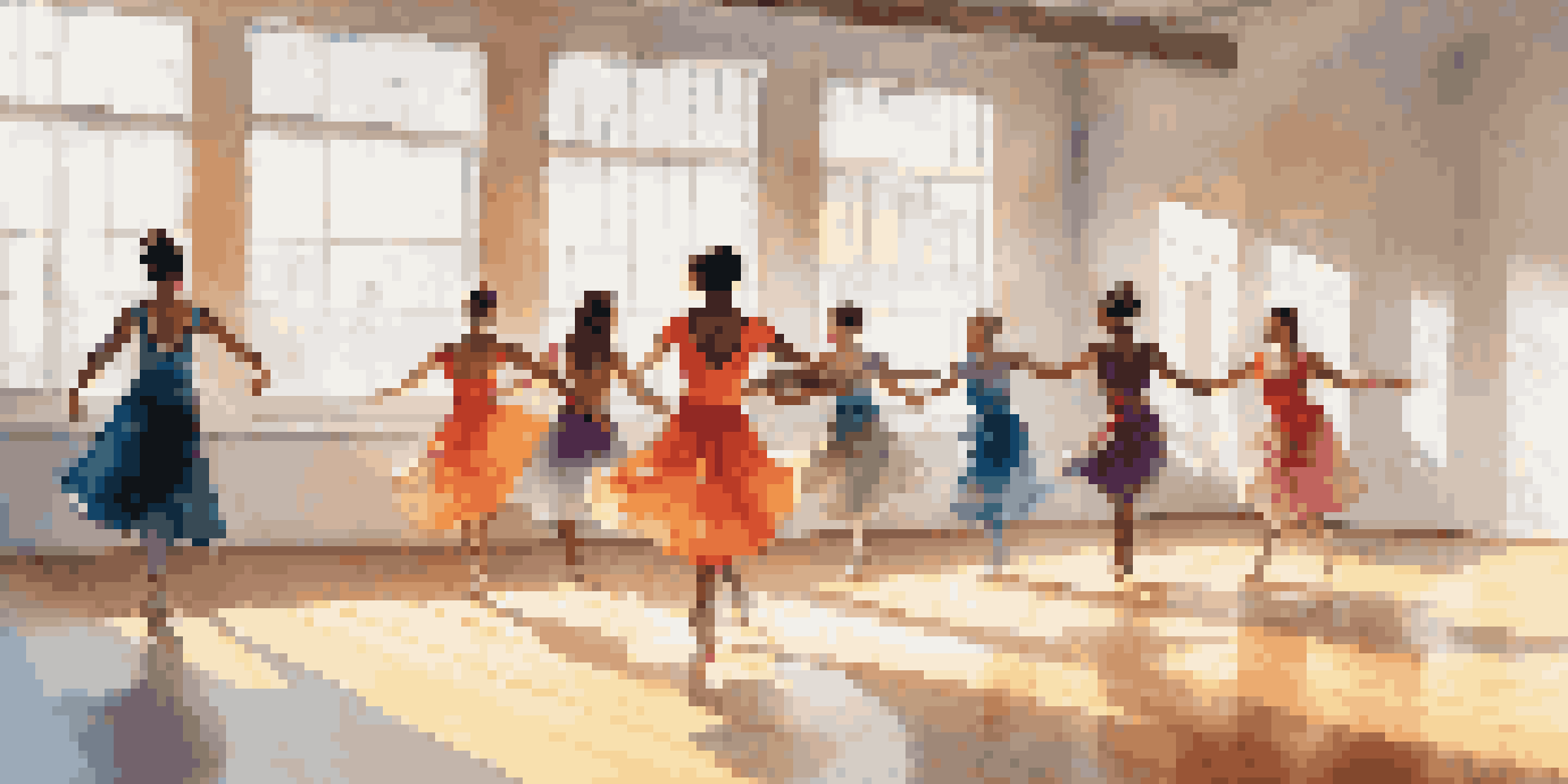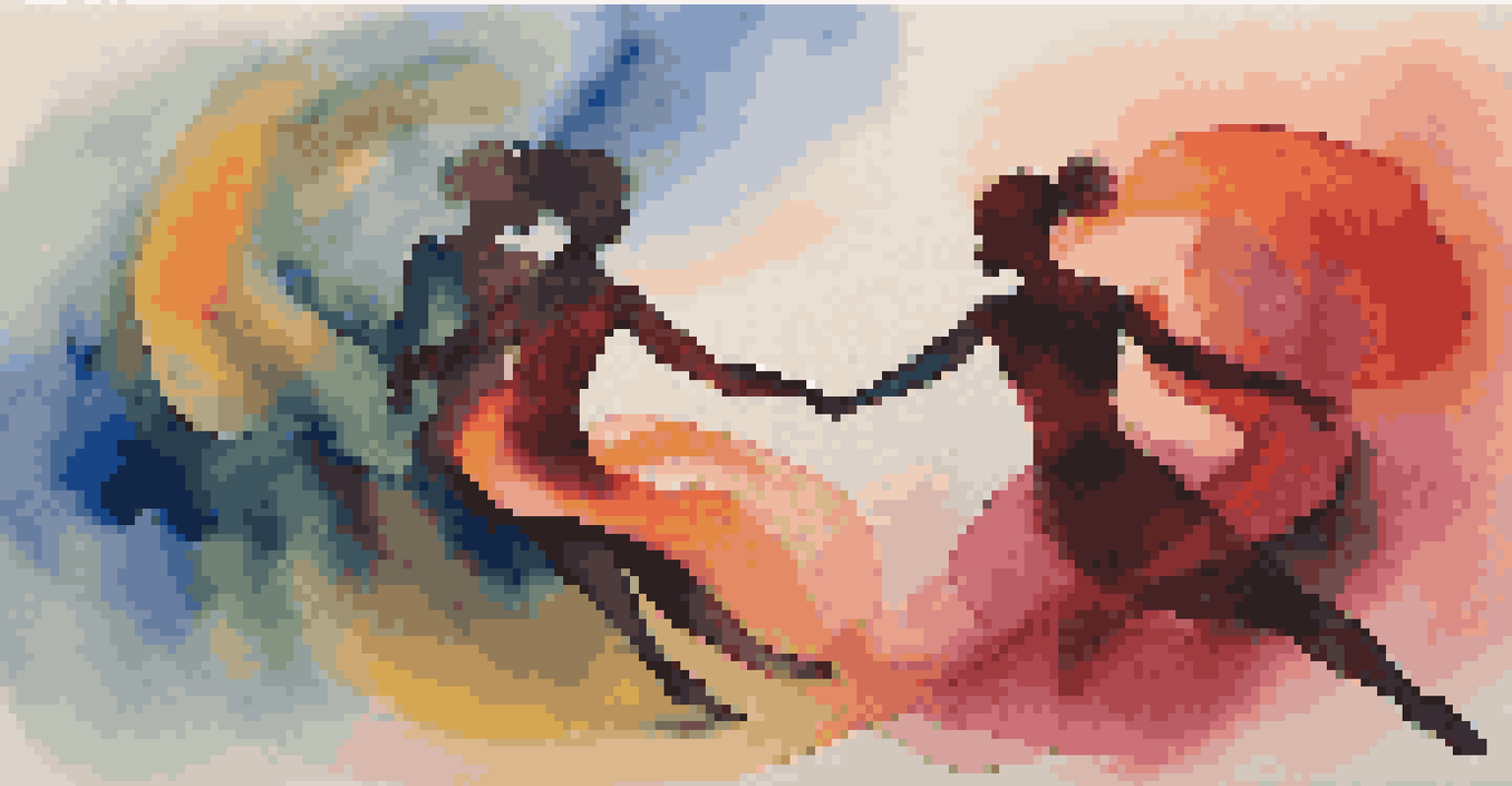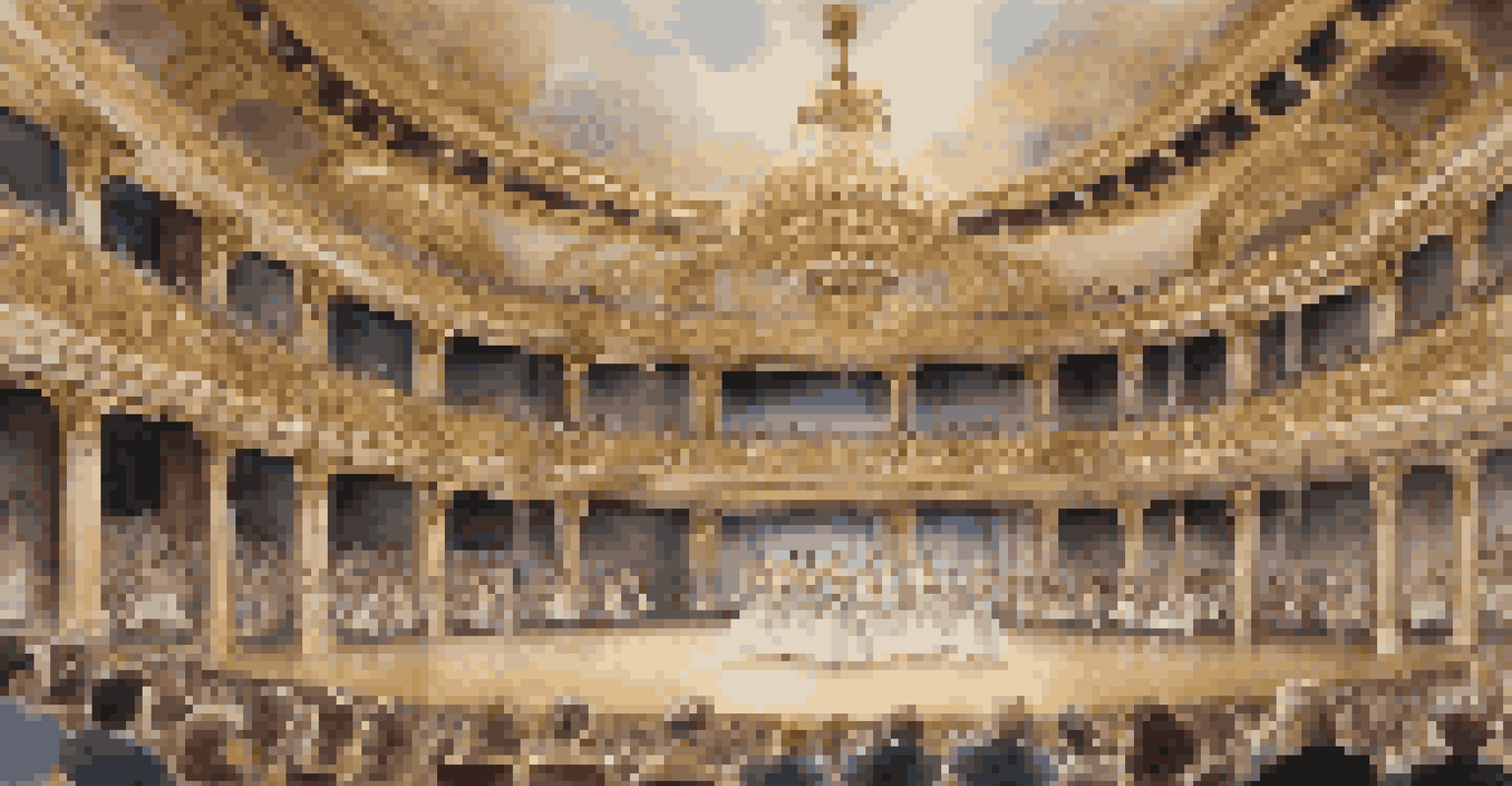Feminism and Dance: A Look at Gender Through Choreography

Understanding Feminism in Dance: An Overview
Feminism in dance seeks to challenge and redefine traditional gender roles within the art form. Historically, dance has often been dominated by male choreographers and dancers, limiting women's representation and voice. By examining these dynamics, we can better appreciate how feminism influences choreography and performance today. This exploration encourages a more inclusive environment where diverse perspectives can flourish.
Dance is the hidden language of the soul.
The rise of feminist movements has inspired many artists to create works that reflect women's experiences and struggles. For instance, choreographers like Martha Graham and Pina Bausch have used their platforms to address social issues and challenge patriarchal norms. Their contributions have paved the way for future generations of female dancers and choreographers to express their stories and advocate for gender equality through dance.
Ultimately, understanding feminism in dance is about recognizing the power of movement as a means of expression. As dancers and choreographers continue to explore gender issues, the art form evolves, offering new insights into the complexities of identity and representation. This ongoing dialogue helps to foster a more equitable landscape within the dance community.
Historical Context: Women in Dance Through the Ages
Throughout history, women have played a significant role in the development of dance, yet their contributions have often been overlooked. From the court dances of the Renaissance to the emergence of ballet, women have not only performed but also shaped the art. However, it wasn't until the feminist movement that their stories began to receive the recognition they deserved.

In the 20th century, the rise of modern dance provided women with a platform to break free from classical constraints. Innovators like Isadora Duncan and Ruth St. Denis explored themes of femininity and liberation, using their bodies to express personal and societal struggles. Their work laid the groundwork for future feminist choreographers who would further challenge the status quo.
Feminism Redefines Dance Roles
Feminism seeks to challenge traditional gender roles in dance, promoting inclusivity and diverse perspectives.
As we reflect on this historical context, it's essential to acknowledge the ongoing impact of these early pioneers on contemporary dance. The legacy of women in dance continues to inspire a new generation of artists, encouraging them to push boundaries and redefine what it means to be a female performer or choreographer today.
Choreography as a Medium for Feminist Expression
Choreography serves as a powerful medium for feminist expression, allowing artists to convey complex narratives about gender and identity. Through movement, choreographers can challenge stereotypes and highlight social injustices that women face. This artistic form becomes a canvas on which they can paint their stories, addressing issues such as body image, sexuality, and empowerment.
We need to reshape our own perception of how we view ourselves. We have to step up as women and take the lead.
For example, works like 'The Rite of Spring' by Martha Graham have pushed boundaries by portraying the struggles of women in a patriarchal society. Such choreographies not only captivate audiences but also provoke thought and discussion around gender dynamics. By using dance as a tool for advocacy, artists can inspire change and promote awareness of critical feminist issues.
Moreover, the collaboration between dancers and choreographers often leads to innovative interpretations of gender roles. When diverse voices come together, they create a rich tapestry of ideas that challenge conventional narratives. This collective approach fosters a sense of community and solidarity, reinforcing the importance of collaboration in the pursuit of equality.
The Role of Male Choreographers in Feminist Dance
While feminism in dance is often associated with female choreographers, male artists also play a crucial role in this discourse. Many male choreographers have embraced feminist ideals, using their platforms to elevate women's voices and perspectives in their works. This collaboration can lead to powerful and transformative pieces that reflect a more balanced view of gender in dance.
Take, for example, the work of choreographer Bill T. Jones, who has consistently incorporated themes of race, sexuality, and gender into his choreography. By partnering with female dancers and exploring their experiences, he challenges traditional notions of masculinity and highlights the importance of inclusivity in dance. His approach demonstrates that gender equality is a responsibility that extends beyond female artists.
Historical Impact of Women in Dance
Women have significantly influenced dance history, yet their contributions gained recognition primarily through feminist movements.
Additionally, the involvement of male choreographers in feminist dance can spark important conversations about privilege and accountability. By acknowledging their position within the hierarchy of the dance world, they can actively work to dismantle structures that perpetuate inequality. This collaborative effort ultimately enriches the art form and creates a more equitable environment for all dancers.
Dance Companies Embracing Feminist Principles
Many contemporary dance companies are embracing feminist principles, actively promoting gender equality and representation in their work. These organizations often prioritize diverse choreographic voices and encourage collaboration among artists of all genders. This shift not only enriches the artistic landscape but also fosters a community where everyone's contributions are valued.
For instance, companies like the Alvin Ailey American Dance Theater and Dance Theatre of Harlem showcase works by female choreographers alongside those of their male counterparts. By highlighting a diverse range of perspectives, they create a more inclusive narrative that reflects the complexities of modern society. This commitment to diversity is essential for the growth and evolution of dance as an art form.
Moreover, these companies often engage in outreach and educational programs aimed at empowering young dancers, particularly girls and women. By providing mentorship and resources, they help cultivate a new generation of artists who are well-equipped to challenge gender norms and advocate for their rights. This grassroots approach ensures that the conversation around feminism and dance continues to thrive.
Intersectionality: The Diversity of Feminist Dance
Intersectionality is a crucial aspect of feminism in dance, recognizing that gender does not exist in a vacuum. Factors such as race, class, and sexuality all intersect to shape individual experiences and identities. By embracing intersectionality, choreographers can create more nuanced and inclusive narratives that reflect the diversity of women's experiences.
For example, the works of choreographers like Liz Lerman and Camille A. Brown explore themes of race and identity while addressing issues faced by women of color. Their choreography challenges dominant narratives and provides a platform for underrepresented voices, fostering a greater understanding of the complexities of gender. This approach enriches the dance community and encourages empathy among audiences.
Intersectionality Enhances Dance Narratives
Embracing intersectionality in dance allows for more nuanced storytelling that reflects the diverse experiences of women.
Ultimately, embracing intersectionality in dance not only enhances artistic expression but also promotes social change. By bringing awareness to the multiple layers of identity, choreographers encourage audiences to reflect on their own biases and assumptions. This collective journey toward understanding helps to create a more inclusive and equitable world within and beyond the realm of dance.
The Future of Feminism in Dance: What Lies Ahead?
As the conversation around feminism in dance continues to evolve, the future holds exciting possibilities for artists and audiences alike. New generations of dancers are increasingly aware of gender issues and are committed to advocating for equality within the industry. This growing awareness is likely to inspire innovative choreographic approaches that challenge traditional norms and celebrate diverse narratives.
Moreover, the rise of digital platforms has expanded the reach of feminist dance, allowing artists to share their work with a global audience. This accessibility facilitates dialogue and collaboration across geographic boundaries, fostering a sense of solidarity among artists committed to gender equality. The online space also provides opportunities for education, allowing individuals to engage with feminist themes in dance more readily.

Ultimately, the future of feminism in dance is a collective effort, driven by collaboration and advocacy. As artists continue to challenge conventions and amplify diverse voices, the dance community can become a catalyst for social change. This evolution will not only enrich the art form but also contribute to a more just and equitable society.